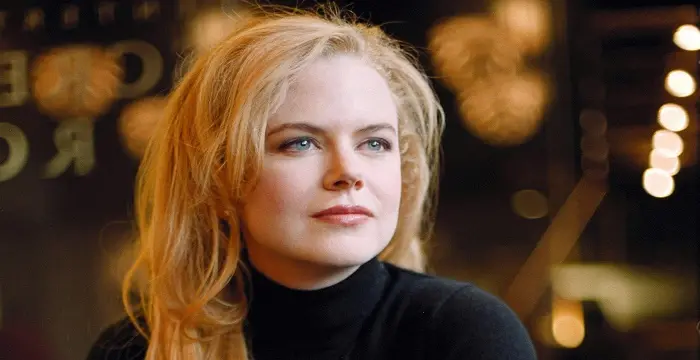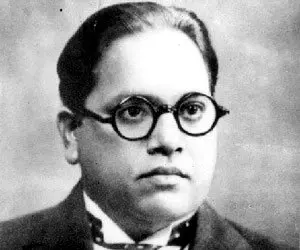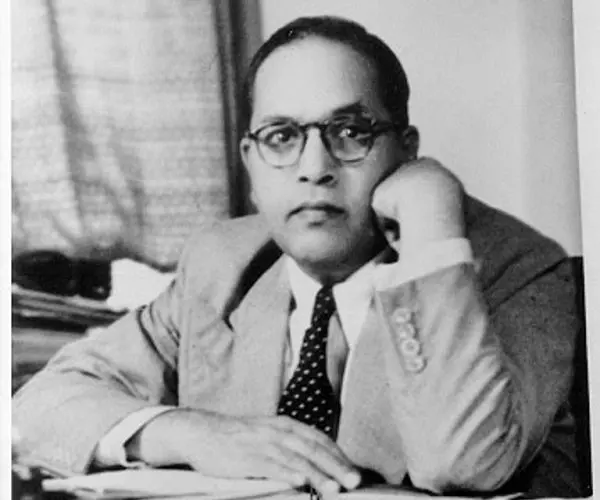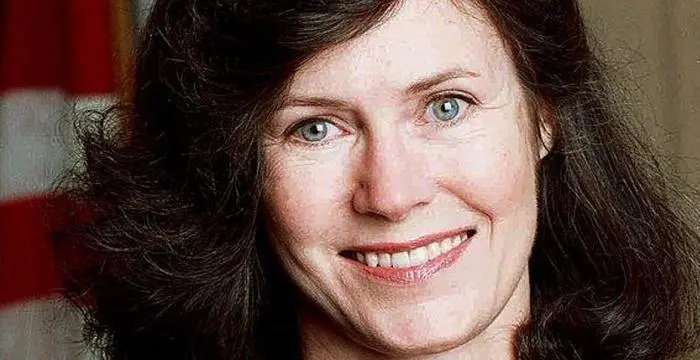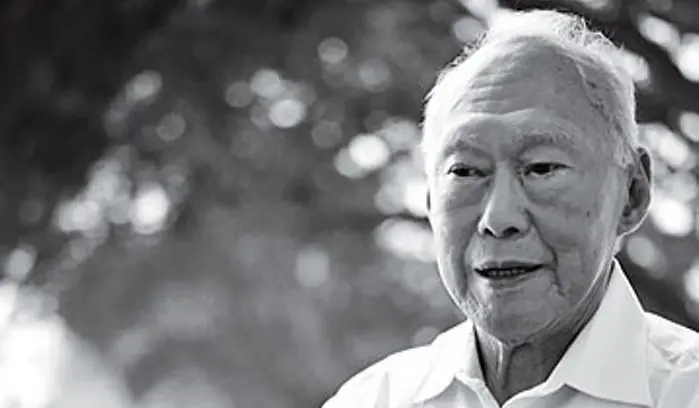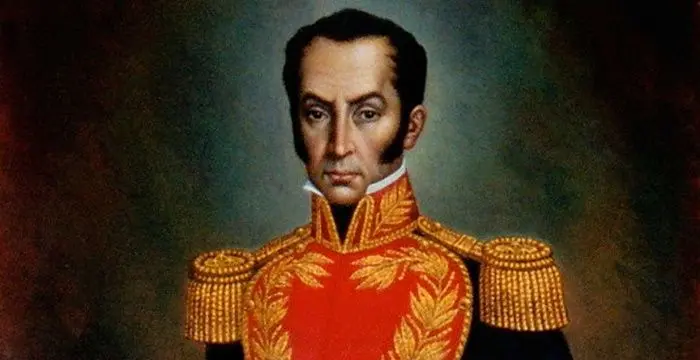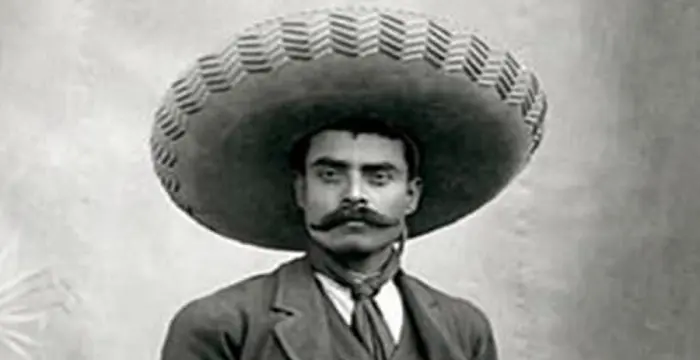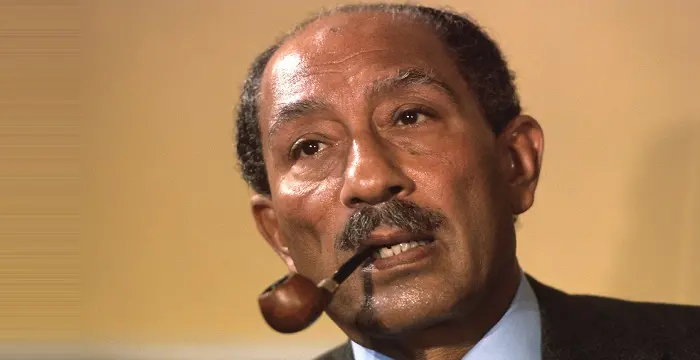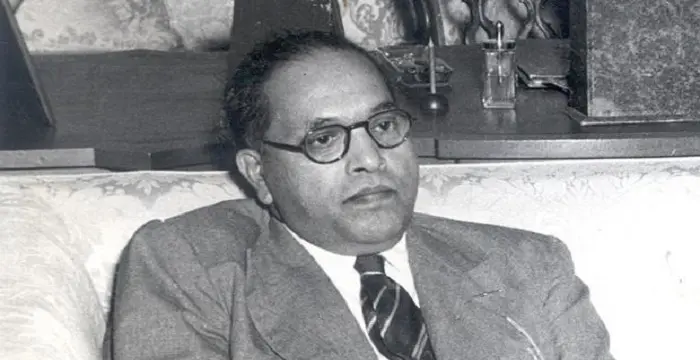
B. R. Ambedkar - London School Of Economics (LSE), Life Achievements and Childhood
B. R. Ambedkar's Personal Details
B
| Information | Detail |
|---|---|
| Birthday | April 14, 1891 |
| Died on | December 6, 1956 |
| Nationality | Indian |
| Famous | Humanitarian, Columbia University, London School Of Economics (LSE), Leaders, Political Leaders, Revolutionaries |
| Spouses | Ramabai Ambedkar (m. 1906–1935), Savita Ambedkar (m. 1948–1956) |
| Known as | Babasaheb Ambedkar, Bhim Rao Ambedkar |
| Childrens | Bhaiyasaheb Ambedkar |
| Universities |
|
| Notable Alumnis |
|
| Founder / Co-Founder |
|
| Birth Place | Mhow |
| Religion | Buddhism |
| Gender | Male |
| Father | Ramji Maloji Sakpa |
| Mother | Bhimabai |
| Sun Sign | Aries |
| Born in | Mhow |
| Died at Age | 65 |
// Famous Humanitarian
Joyce Meyer
Joyce Meyer is a Christian author and speaker. This biography provides detailed information about her childhood, life, achievements, works & timeline
Swami Vivekananda
Swami Vivekananda was the chief disciple of Sri Ramakrishna, and was responsible for awakening India spiritually. Check this biography to know in detail about his life, profile and timeline.
Nicole Kidman
Nicole Kidman is one of the most talented actors that the Hollywood film industry can boast of. Browse through this biography to get detailed information regarding her life, childhood, profile & timeline
B. R. Ambedkar's photo
Who is B. R. Ambedkar?
B.R. Ambedkar was a leading activist and social reformer who gave his life working for the upliftment of the Dalits and the socially backward class of India. A messiah for the downtrodden, he continuously fought for eradication of caste discrimination that had fragmented the Indian society and made it cripple. Born in a socially backward family, Ambedkar was the victim of caste discrimination, inequality and prejudice. However, fighting all odds, he attained higher education thus becoming the first ever untouchable to attain the same. No sooner after completing his studies, he launched himself politically fighting for the rights of the depressed class and inequality practiced in the society. He was a crusader of social equality and justice. Academically trained as a jurist, he went on to become the first Law Minister of Free India and the framer or chief architect of the Constitution of India. In his later years, he acted as a revivalist of Buddhism in India, by converting himself to the religion to free himself from the perils of caste differences and unfairness practiced by the Hindus.
// Famous London School Of Economics (LSE)
Kimba Wood
Kimba Maureen Wood is a Senior United States District Judge. Check out this biography to know about her birthday, childhood, family life, achievements and fun facts about her.
David Attenborough
Sir David Attenborough is an English broadcaster and naturalist. This biography offers detailed information about his childhood, life, works, achievements, trivia and timeline.
Lee Kuan Yew
Lee Kuan Yew was the first Prime Minister of the Republic of Singapore. This biography profiles his childhood, life & timeline.
Childhood & Early Life
He was born as Bhimrao Ramji Ambedkar to Ramji Maloji Sakpal and Bhimabai in the Central Province of India. His father served in the Indian army. He was the last of the fourteen children born to the couple.
Belonging to Mahar caste, who were considered untouchables, his family suffered from socio-economic discrimination. However, due to special privileges rendered to army children, he secured good education.
Young Ambedkar surfaced a lot of problems while academically training himself but he surpassed all of them. In 1897, he along with his family moved to Bombay where he enrolled at the Elphinstone High School, thus becoming the first ever untouchable to attain higher education.
Completing his matriculation degree in 1907, he admitted himself to Elphinstone College in 1908, again creating history by becoming the first untouchable to enter university. He graduated from the same in 1912 with a degree in economics and political science.
He secured a job at the Baroda state government but did not continue the same for long as he was awarded a Baroda State Scholarship, which provided him the opportunity to gain postgraduate education at Columbia University in New York City. To pursue the same, he moved to America in 1913.
He completed his MA in June 1915, majoring in Economics, with Sociology, History, Philosophy and Anthropology as other subjects of study. Two years henceforth, he gained a PhD in Economics.
Meanwhile, in 1916, he enrolled for a bar course at Gray’s Inn. However, due to the termination of the scholarship, he had to return to India.
Career
Upon returning to India, he worked as the Defence Secretary for the Princely State of Baroda. However, the work was not easy for him as he was often ridiculed and castigated for being an untouchable.
Quitting the profile of military minister, he took up jobs as a private tutor and accountant. He even established a consultancy business which doomed due to his social status. He finally found himself a teaching position at the Sydenham College of Commerce and Economic in Mumbai.
Being a victim of caste discrimination inspired him to uplift the pitiable state of the untouchables in the society. Thus, with the help of the Maharaja of Kolhapur, he founded a weekly journal, ‘Mooknayak’, which criticized the orthodox beliefs of Hindus and the reluctance of politicians to fight against the discrimination.
Accumulating enough wealth, he moved to London to complete his education. In 1921, he attained his Master’s degree from the London School of Economics. Two years later, he acquired his D.Sc.in Economics. Completing his law studies, he was admitted to the British bar as a barrister.
Returning to India, he started working as a legal professional in the country. His passion for eradicating the practice of caste discrimination led him to found the ‘Bahishkrit Hitakarini Sabha’. The main aim of the organization was to provide education and socio-economic improvement to the backward class.
In 1925, he was appointed to Bombay Presidency Committee to work under the All-European Simon Commission. The commission reports were thrashed by the Congress who set up its own version of the Constitution of free India.
In 1927, he actively worked against untouchability. Instead of taking the route of violence, he walked on the footsteps of Gandhi and led a satyagraha movement, fighting for the rights of untouchables to access the main water source and enter the temples.
In 1932, due to his rising popularity as a crusader of the rights of the depressed class he received an invitation to attend the Second Round Table Conference in London. However, at the conference, he opposed Gandhi who voiced against a separate electorate that he demanded.
Finally, he reached an understanding with Gandhi which was called the Poona Pact according to which instead of a special electorate; a reservation was granted to the depressed class in the regional legislative assemblies and Central Council of States.
In 1935, he was appointed as the Principal of the Government Law College, a position he retained for two years. Following year, he founded the Independent Labour Party, which went on to secure 14 seats in the 1937 Bombay elections
Same year, i.e. in 1937, he published his book, ‘The Annihilation of Caste’ in which he strongly ridiculed the Hindu orthodox leaders and condemned the caste system practiced in the country. Next he came up with his work, ‘Who Were the Shudras?’ in which he explained the formation of Untouchables.
As soon as India gained independence, he administered the transformation of his political party into the All India Scheduled Castes Federation. However, the party did not perform well at the 1946 elections held for the Constituent Assembly of India.
He served as the minister for labour of the Viceroy's Executive Council and on the board of the Defence Advisory Committee. It was his dedication that led him to earn the chair of Free India’s first law Minister and as the chairman of the drafting committee of the Constitution of India.
The constitution drafted by him aimed to bring about a social revolution in the country freeing it from any sort of discrimination. It provided the citizens with freedom of religion, abolished untouchability, advocated rights for women and bridged the gap amongst the classes of the society. It even provided reservations of jobs and education for members of the backward class.
Other than his role as the framer of the Constitution, he helped establish the Finance Commission of India. It was through his policies that the nation progressed both economically and socially. He emphasised on free economy with stable rupee.
In 1951, following the indefinite stalling of the Hindu Code Bill proposed by him, he resigned from the Cabinet. He contested for a seat at the Lok Sabha but was defeated. He was later appointed to the Rajya Sabha of which he was a member until his death
Personal Life & Legacy
He first married in 1906 to Ramabai, who was just nine years old. In 1912, the couple was blessed with a son named Yashwant.
In 1935, Ramabai breathed her last succumbing to a long illness.
It was while treating himself of neurotic pains and lack of sleep that he first met Dr Sharada Kabir. The two eventually married on April 15, 1948. Post marriage, she renamed herself Savita Ambedkar and attended to him all through.
He converted himself to Buddhism after attending a convention in Sri Lanka of Buddhist scholars. Inspired by their preaching, he penned a book on Buddhism. No sooner he converted to the religion. He founded the Bharatiya Bauddha Mahasabha (Buddhist Society of India) in 1955 and completed his final work ‘The Buddha and His Dhamma’ in 1956. The book was however published posthumously.
His deteriorating health condition further worsened as he suffered from diabetes and weak eyesight. He breathed his last at his hom on December 6, 1956.
Since he had converted himself to a Buddhist, a Buddhist-style cremation was organized for him. The ceremony was attended by hundreds of thousands of supporters, activists and admirers.
To commemorate his contribution to the society, a memorial was constructed and established. His birthday is celebrated as a public holiday, known as Ambedkar Jayanti or Bhim Jayanti.
In 1990, he was posthumously awarded Bharat Ratna, India's highest civilian honour.
Trivia
This revolutionary, who fought against the untouchability practiced in India, is popularly known as the chief architect of the Constitution of India.
Top 10 Facts You Did Not Know About B.R. Ambedkar
Ambedkar played a key role in establishment of Reserve Bank of India in 1935.
He had suggested the division of both Madhya Pradesh and Bihar for better governance way back in 1955.
He wanted to sponsor Sanskrit as the official language of the Indian union.
Ambedkar contested Lok Sabha election twice but both the times he lost the election.
His autobiography ‘Waiting for a Visa’ is used as a text book in the Columbia University.
He was opposed to the whole idea of reservation of jobs and constituencies and didn’t want the reservation system to exist at all.
He was the first Indian to complete a doctorate degree overseas.
Ambedkar was the one who insisted on having the working hours reduced from fourteen to eight hours in a day.
He strongly opposed Article 370 of the Indian constitution which gives special status to the state of Jammu & Kashmir.
He played a key role in forming the National Employment Exchange Agency in India.
// Famous Revolutionaries
Tecumseh
Tecumseh was a Native American leader of the Shawnee clan. This biography profiles his childhood, life and timeline.
Simon Bolivar
Simón Bolívar was a Venezuelan military leader who was instrumental in independence of several Latin American countries from the Spanish rule. This biography profiles his childhood, life, achievements and timeline.
Emiliano Zapata
Emiliano Zapata was a Mexican revolutionary leader and one of the most important figures of the Mexican Revolution.Check out this biography to know about his childhood, family life, achievements and other facts about his life.
B. R. Ambedkar's awards
| Year | Name | Award |
|---|---|---|
Other | ||
| 0 | 1990 - Bharat Ratna | |
B. R. Ambedkar biography timelines
- // 14th Apr 1891He was born as Bhimrao Ramji Ambedkar to Ramji Maloji Sakpal and Bhimabai in the Central Province of India. His father served in the Indian army. He was the last of the fourteen children born to the couple.
- // 1897Young Ambedkar surfaced a lot of problems while academically training himself but he surpassed all of them. In 1897, he along with his family moved to Bombay where he enrolled at the Elphinstone High School, thus becoming the first ever untouchable to attain higher education.
- // 1906He first married in 1906 to Ramabai, who was just nine years old. In 1912, the couple was blessed with a son named Yashwant.
- // 1907 To 1912Completing his matriculation degree in 1907, he admitted himself to Elphinstone College in 1908, again creating history by becoming the first untouchable to enter university. He graduated from the same in 1912 with a degree in economics and political science.
- // 1913He secured a job at the Baroda state government but did not continue the same for long as he was awarded a Baroda State Scholarship, which provided him the opportunity to gain postgraduate education at Columbia University in New York City. To pursue the same, he moved to America in 1913.
- // 1915He completed his MA in June 1915, majoring in Economics, with Sociology, History, Philosophy and Anthropology as other subjects of study. Two years henceforth, he gained a PhD in Economics.
- // 1916Meanwhile, in 1916, he enrolled for a bar course at Gray’s Inn. However, due to the termination of the scholarship, he had to return to India.
- // 1921Accumulating enough wealth, he moved to London to complete his education. In 1921, he attained his Master’s degree from the London School of Economics. Two years later, he acquired his D.Sc.in Economics. Completing his law studies, he was admitted to the British bar as a barrister.
- // 1925In 1925, he was appointed to Bombay Presidency Committee to work under the All-European Simon Commission. The commission reports were thrashed by the Congress who set up its own version of the Constitution of free India.
- // 1927In 1927, he actively worked against untouchability. Instead of taking the route of violence, he walked on the footsteps of Gandhi and led a satyagraha movement, fighting for the rights of untouchables to access the main water source and enter the temples.
- // 1932In 1932, due to his rising popularity as a crusader of the rights of the depressed class he received an invitation to attend the Second Round Table Conference in London. However, at the conference, he opposed Gandhi who voiced against a separate electorate that he demanded.
- // 1935In 1935, he was appointed as the Principal of the Government Law College, a position he retained for two years. Following year, he founded the Independent Labour Party, which went on to secure 14 seats in the 1937 Bombay elections
- // 1935In 1935, Ramabai breathed her last succumbing to a long illness.
- // 1937Same year, i.e. in 1937, he published his book, ‘The Annihilation of Caste’ in which he strongly ridiculed the Hindu orthodox leaders and condemned the caste system practiced in the country. Next he came up with his work, ‘Who Were the Shudras?’ in which he explained the formation of Untouchables.
- // 1948It was while treating himself of neurotic pains and lack of sleep that he first met Dr Sharada Kabir. The two eventually married on April 15, 1948. Post marriage, she renamed herself Savita Ambedkar and attended to him all through.
- // 1951In 1951, following the indefinite stalling of the Hindu Code Bill proposed by him, he resigned from the Cabinet. He contested for a seat at the Lok Sabha but was defeated. He was later appointed to the Rajya Sabha of which he was a member until his death
- // 1955He converted himself to Buddhism after attending a convention in Sri Lanka of Buddhist scholars. Inspired by their preaching, he penned a book on Buddhism. No sooner he converted to the religion. He founded the Bharatiya Bauddha Mahasabha (Buddhist Society of India) in 1955 and completed his final work ‘The Buddha and His Dhamma’ in 1956. The book was however published posthumously.
- // 6th Dec 1956His deteriorating health condition further worsened as he suffered from diabetes and weak eyesight. He breathed his last at his hom on December 6, 1956.
- // 1990In 1990, he was posthumously awarded Bharat Ratna, India's highest civilian honour.
// Famous Leaders
Edi Rama
Edi Rama is the current Prime Minister of Albania. Check out this biography to know about his childhood, life, achievements, works & timeline.
Tecumseh
Tecumseh was a Native American leader of the Shawnee clan. This biography profiles his childhood, life and timeline.
Khalifa bin Zayed Al Nahyan
Sheikh Khalifa bin Zayed Al Nahyan is the current President of the United Arab Emirates (UAE). Check out this biography to know about his birthday, childhood, family life, achievements and fun facts about him.
Anwar Sadat
Anwar Sadat was the third President of Egypt and has been awarded the Nobel Prize for his peace initiatives. To know more about his childhood, career, profile and timeline read on the following biography.
Leo Varadkar
Cam Leo Varadkar is the current Taoiseach—the Prime Minister—of the Republic of Ireland. Check out this biography to know about his childhood, family life, achievements and other facts about his life.
Swami Vivekananda
Swami Vivekananda was the chief disciple of Sri Ramakrishna, and was responsible for awakening India spiritually. Check this biography to know in detail about his life, profile and timeline.
B. R. Ambedkar's FAQ
What is B. R. Ambedkar birthday?
B. R. Ambedkar was born at 1891-04-14
When was B. R. Ambedkar died?
B. R. Ambedkar was died at 1956-12-06
Where was B. R. Ambedkar died?
B. R. Ambedkar was died in Delhi
Which age was B. R. Ambedkar died?
B. R. Ambedkar was died at age 65
Where is B. R. Ambedkar's birth place?
B. R. Ambedkar was born in Mhow
What is B. R. Ambedkar nationalities?
B. R. Ambedkar's nationalities is Indian
Who is B. R. Ambedkar spouses?
B. R. Ambedkar's spouses is Ramabai Ambedkar (m. 1906–1935), Savita Ambedkar (m. 1948–1956)
Who is B. R. Ambedkar childrens?
B. R. Ambedkar's childrens is Bhaiyasaheb Ambedkar
What was B. R. Ambedkar universities?
B. R. Ambedkar studied at Columbia University,London School Of Economics, London School of Economics (1922), London School of Economics (1916 – 1917), Columbia University (1913 – 1915), Elphinstone College (1908 – 1912), University of London
What was B. R. Ambedkar notable alumnis?
B. R. Ambedkar's notable alumnis is Columbia University, London School Of Economics
Which company or organization was founded by B. R. Ambedkar?
B. R. Ambedkar was the founder/co-founder of Buddhist Society of India, Independent Labour Party, Scheduled Castes Federation, Samata Sainik Dal
What is B. R. Ambedkar's religion?
B. R. Ambedkar's religion is Buddhism
Who is B. R. Ambedkar's father?
B. R. Ambedkar's father is Ramji Maloji Sakpa
Who is B. R. Ambedkar's mother?
B. R. Ambedkar's mother is Bhimabai
What is B. R. Ambedkar's sun sign?
B. R. Ambedkar is Aries


